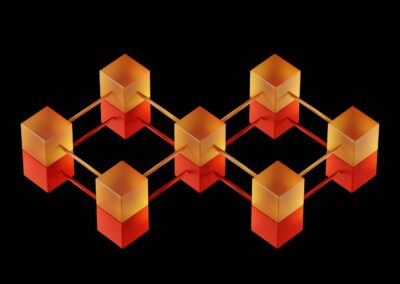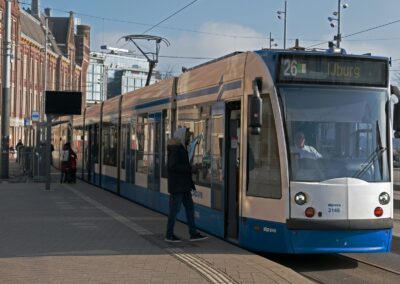Introduction to the Metaverse
Understanding the Metaverse
The Metaverse represents a collective virtual shared space, created by the convergence of virtually enhanced physical reality and physically persistent virtual space. It is inclusive of augmented reality (AR), virtual reality (VR), and other immersive digital experiences. As the Metaverse evolves, it is rapidly becoming a focal point for business innovation, social interaction, and digital transformation. In regions like Saudi Arabia and the UAE, where technological advancements are highly encouraged, the potential for the Metaverse is immense.
In Saudi Arabia, the government’s Vision 2030 initiative emphasizes digital transformation and innovation, making the Metaverse an attractive prospect for various industries. Similarly, Dubai’s strategic plans aim to integrate cutting-edge technologies to enhance urban life, positioning the city as a global technology hub.
The Significance of Realism in the Metaverse
Realism in the Metaverse refers to the creation of virtual environments that are indistinguishable from the real world. This involves high-resolution graphics, lifelike physics, and realistic interactions. Achieving such realism is crucial for user engagement and immersion. For businesses, realistic virtual environments can enhance customer experiences, provide advanced training simulations, and offer new avenues for marketing and collaboration.
In the context of business success, realistic simulations can be used for executive coaching and leadership training. For example, generative AI can create virtual scenarios that help leaders practice decision-making in complex situations. In the UAE, companies are leveraging VR for high-fidelity training programs, ensuring that employees are well-prepared for real-world challenges.
The Role of Performance Optimization
While realism is essential, it must be balanced with performance optimization to ensure smooth and efficient experiences. Performance optimization involves techniques to reduce latency, improve frame rates, and manage computational resources effectively. In the Metaverse, this balance is critical to prevent lag, ensure seamless interactions, and maintain user satisfaction.
Performance optimization is particularly important in large-scale virtual environments, such as those used in project management and collaboration tools. In Riyadh, businesses are exploring the Metaverse for virtual meetings and project planning, requiring environments that are both realistic and efficient. By optimizing performance, companies can ensure that these virtual interactions are as productive and engaging as their physical counterparts.
Challenges and Solutions in Balancing Realism and Performance
Technical Challenges in Achieving Realism
One of the primary challenges in achieving realism in the Metaverse is the immense computational power required for high-resolution graphics and complex simulations. Rendering lifelike environments in real-time demands advanced hardware and sophisticated algorithms. This can be a significant barrier for widespread adoption, especially in regions with varying levels of technological infrastructure.
In Saudi Arabia and the UAE, where investments in technology are substantial, the focus is on developing infrastructure that can support the demands of the Metaverse. For example, advancements in AI and machine learning can enhance rendering techniques, making it possible to create realistic environments more efficiently. Additionally, blockchain technology can be used to distribute computational tasks across a decentralized network, reducing the burden on individual systems.
Optimizing Performance for Seamless Experiences
To balance realism with performance, optimization techniques such as level of detail (LOD) management, dynamic resolution scaling, and efficient data streaming are employed. These techniques help manage the computational load by adjusting the detail and resolution of virtual environments based on the user’s device capabilities and network conditions. By doing so, high-quality experiences can be delivered without compromising efficiency.
For instance, in Dubai’s real estate sector, virtual tours of properties are becoming increasingly popular. By using optimization techniques, developers can ensure that these virtual tours are accessible on various devices without losing the immersive quality that attracts potential buyers. In Riyadh, businesses are exploring similar approaches for virtual showrooms and product demonstrations.
Integrating Emerging Technologies
Emerging technologies such as generative AI, blockchain, and advanced networking solutions play a crucial role in addressing the challenges of balancing realism and performance. Generative AI can create realistic virtual environments by learning from real-world data, reducing the need for manual modeling. Blockchain can ensure secure and efficient data management, while advanced networking solutions, including 5G, provide the necessary bandwidth for high-quality Metaverse experiences.
In the context of leadership and management skills, these technologies can create virtual environments for executive coaching and strategic planning. For example, AI-driven simulations can provide leaders with real-time feedback and insights, helping them refine their decision-making skills. In the UAE, companies are already utilizing AI and blockchain to enhance their training programs and streamline business operations.
Conclusion
Balancing realism and performance in the Metaverse is a complex but essential task for creating engaging and efficient virtual experiences. By addressing technical challenges, optimizing performance, and integrating emerging technologies, businesses can harness the full potential of the Metaverse. In regions like Saudi Arabia and the UAE, where technological innovation is a priority, the Metaverse offers significant opportunities for enhancing business success, leadership development, and digital transformation.
As the Metaverse continues to evolve, the focus will be on creating environments that are not only realistic and immersive but also efficient and accessible. By achieving this balance, businesses can ensure that the Metaverse becomes a valuable tool for innovation and growth, driving success in a rapidly changing digital landscape.
#Metaverse #Realism #PerformanceOptimization #VirtualReality #SaudiArabia #UAE #Riyadh #Dubai #AI #Blockchain #GenerativeAI #BusinessSuccess #Leadership #ManagementSkills #ProjectManagement























